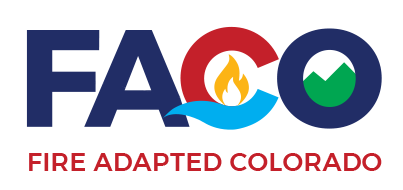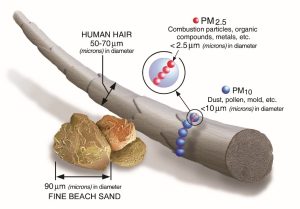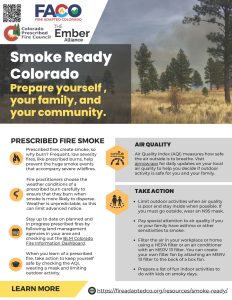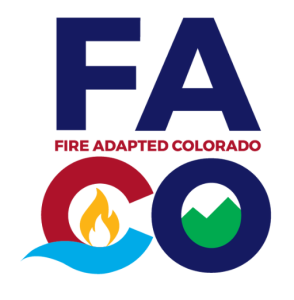SMOKE READY
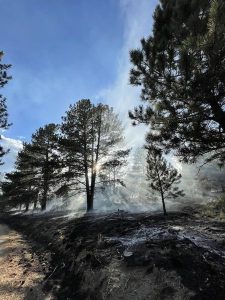
Prescribed fire is a crucial measure in preventing severe wildfires and improving community safety
Prescribed, or beneficial fire, is used to mitigate future high-severity fires. While beneficial fire produces smoke that can harm human health, smoke can often be carefully managed in terms of duration and pollutant concentration.
Both prescribed fires and managed wildland fires result in significantly less severe smoke emissions than from unplanned, high-severity wildfires, particularly those wildfires that result in an urban conflagration or megafires.
This page provides resources to protect yourself when there is smoke in the air, prescribed fire and wildfire resource links, and examines the importance of restoring our relationship with fire.
Wildfire vs. Prescribed Fire Smoke = Months vs. Days of Smoke Exposure
- Particulate matter (PM), especially the microscopic kind (PM2.5) found in wildfire and prescribed fire smoke, can irritate the lungs and adversely affect respiratory and cardiovascular health.
- EPA scientists estimate that 30% of annual PM2.5 in the US is related to wildfire smoke, and up to 90% during the wildfire season in the Western US, indicating that many of the illnesses, hospitalizations, and deaths associated with air pollution may result from exposure to wildfire related PM.
- Prescribed fire, which reduces the amount of vegetation on a landscape, is a necessary management tool to reduce wildfire severity and the many months of smoke wildfires produce. Although prescribed fires still produce smoke, prescribed fires are planned for and short in duration, allowing community members to plan for the days in which they may need to use HEPA filters and shelter from the smoke.
SMOKE & YOUR HEALTH
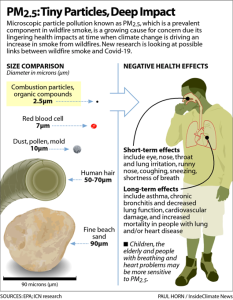 Smoke exposure (measured as smoke density in the Air Quality Index) can cause symptoms such as irritated sinuses, coughing, and asthma attacks.
Smoke exposure (measured as smoke density in the Air Quality Index) can cause symptoms such as irritated sinuses, coughing, and asthma attacks.- Smoke transforms in chemical structure as it travels and may be transformed by water bodies. We do not know how smoke transformations change their health impacts, but we do know that smoke particles can carry bacteria and fungi, which are potential irritants.
- Anyone experiencing symptoms or with a known or suspected medical condition that could be worsened by smoke should contact their healthcare provider for further advice, or call 911 if warranted.
- What are small particles (PM 2.5) and how do they affect me?
- Microscopic particles (solids, liquids, and chemicals) found in the air, including in prescribed fire and wildfire smoke, reduce visibility. When larger particles (PM 10) are inhaled they generally irritate the eyes, nose and throat. Smaller particles (PM 2.5) can travel deeper into the bodies, irritating the lungs and even entering the bloodstream. Both particle sizes are found in smoke.
- Who is considered more at risk to wildfire and prescribed fire smoke?
- Children who are in a critical period of development, should limit their time in areas with poor air quality and are best kept in indoor spaces with good air filtration during smoke events.
- Pregnant or nursing mothers, if possible, should stock up on medications and food in case they need to stay indoors.
- Older adults and people with pre-existing conditions (such as those with asthma, heart disease, or a history of strokes), should wear masks and stay indoors with high efficiency (HEPA) filters.
- Follow your doctor’s advice about how you may manage your respiratory needs when smoke is in the air. Call your doctor if the symptoms worsen.
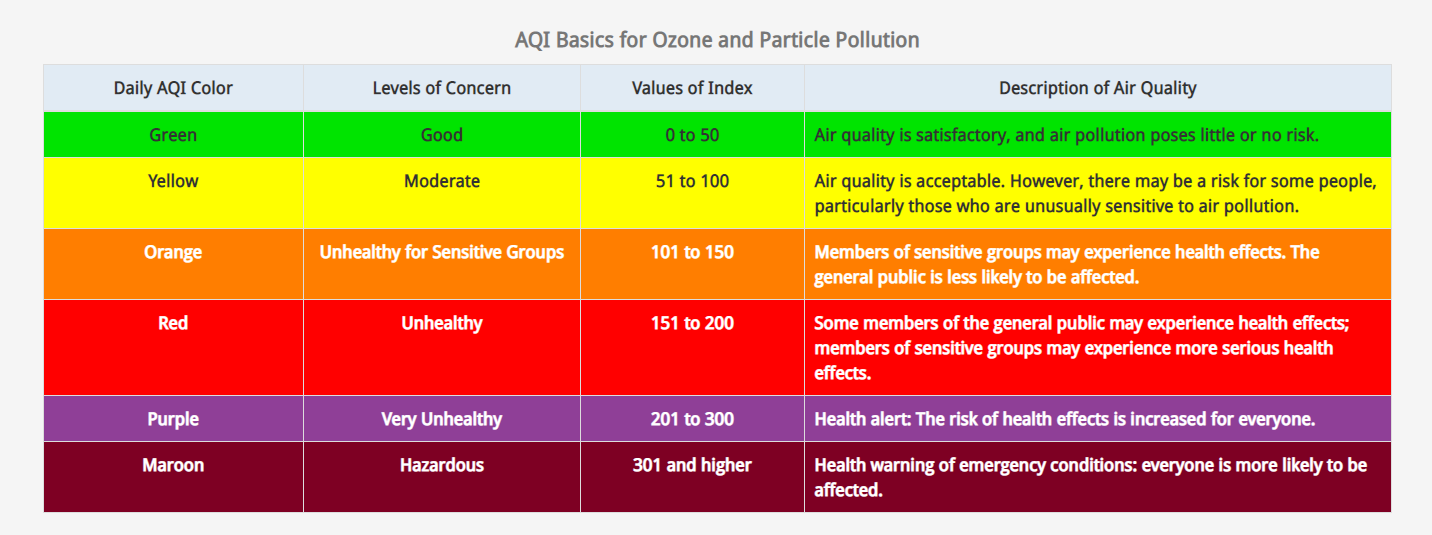
- Know that fires will continue happening in the US, as will the smoke that comes with them. Learning to live with fire is also learning to live with smoke, which means we need to support people in having well-sealed homes and access to air filtration systems.
- Limit your exposure to smoke by trying to stay in well-insulated buildings, preferably those with high efficiency (HEPA) filters.
- Pay attention to current and predicted smoke conditions to govern when you may go outside.
- Avoid anything that increases indoor air pollution, like vacuuming or leaving windows open. This video that walks you through how to burn wood in your house while minimizing air pollution.
- If you can afford one, run an indoor HEPA air filter where you are primarily in the day, and in your bedroom at night. Some community health programs have filters you can borrow on loan.
- If you have indoor air conditioning, consult a local heating and air conditioning company to see if your air conditioning system can handle a high-efficiency filter system with MERV 13 rating.
- Other air purifiers and filters can be bought if HEPA filters are inaccessible. Here are suggestions on which to buy. And if you would like to make your own DIY air filter, here is a tutorial. Here is another DIY air filter tutorial on This Old House. Remember that DIY air filters shouldn’t be expected to last more than two years.
- Fine particles, but not hazardous gases, can be filtered with Niosh N95 and N100 masks.
- Pets can also be affected by smoke and evacuation plans should be made for them.
- This video walks you through how to choose filters and secure your mask when there is smoke in the air. Additionally, this video discusses which masks do not filter out smoke (ie, bandanas, dust masks, and surgical masks) and advises on who masks are not a good tool for. Niosh N95s can be found at your local hardware store.
- A general rule of thumb is if visibility is less than 5 miles due to smoke, the air is unhealthy for sensitive populations, and if the visibility is less than 3 miles, it is unhealthy for everyone.
- If you do not have air conditioning or air filters, seek shelter in a designed evacuation center or cool shelter. (Use the 5-3-1 Visibility Method to estimate air quality.)
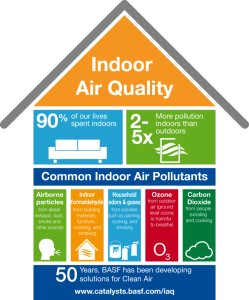 You can create a “clean room” in your house, a room with as few doors and windows as possible and where you do not burn candles, incense, fireplaces or gas stoves, smoke, or vacuum. Check how well sealed your windows are.
You can create a “clean room” in your house, a room with as few doors and windows as possible and where you do not burn candles, incense, fireplaces or gas stoves, smoke, or vacuum. Check how well sealed your windows are.- Purchase a certified ozone free air filter before you encounter smoke from wildfire or prescribed fires.
- Ask an air conditioning professional if your air filter is the right size for your room and right type for your home system. It could be a high efficiency HEPA filter or a MERV 13 or higher filter for your HVAC system. Ask how often you should change your filters. If you would like to make your own DIY air filter, here is a tutorial. Here is another DIY air filter tutorial on This Old House. Remember that DIY air filters shouldn’t be expected to last more than two years.
- Check air quality reports for your area and check out your local dispatches’ Facebook pages for fire updates.
- Here is a fact sheet on air filters in Spanish.
- AirNow has resources for you to prepare for the smoke before, during, and after fire.
- The Smoke Sense App provides information on current smoke levels and is a citizen science project run through the EPA that aims to collect and disseminate information on smoke exposure and health.
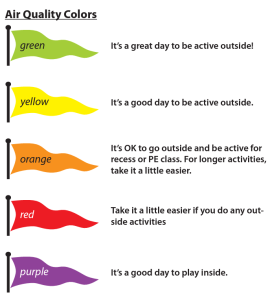
Graphic Credit: EPA
- Why is Coco Red? is a children’s book to provide guidance on how to interpret AQI and shift how you live when there is smoke in the air.
- Ready Wrigley Prepares for Wildfires & Smoke is a coloring book to guide children in how to prepare for living with wildfire and smoke.
- A Story of Health is an e-book that walks parents through how to prepare and live with wildfire and smoke.
- “Trinka and Sam, The Big Fire” is a coloring book that explores the feelings and worries children and their family may have after experiencing a wildfire. Print it in English, Spanish, and Portuguese.
- The Pediatric Environmental Health Specialty Units (PEHSU) provides many resources on how to prepare your children for wildfire season and how to keep them healthy when smoke is in the air.
- Stressed from smoke? Here are some ways to cope. Make sure you are checking in with other people around you who are experiencing the smoke as well!
- Let’s make our schools safe for children during wildfire and prescribed fire smoke episodes. Here are resources educators and schools can use.
TRACKING SMOKE

- AirNow.gov allows you to observe air quality across the USA by collecting information from public air monitors and private air sensors. The private air sensors are the same as those used by Purple Air, but AirNow.gov tracks all air quality by averaging it over a 24-hour period, weighting the most recent three hours (thereby collecting less hour by hour nuance in air quality). Note that private air sensors are less accurate due to plenty of public air filters being placed inside, rather than outside. If you would like to only look at public air monitors (regulated by the EPA), you can go here. Note that these monitors are of high quality but are not necessarily located where you live.
- AirNow app for iPhone
- AirNow app for Android
- You can also layer the maps so that you can simultaneously track air quality, where the smoke may be coming from, and where the wildfires are.
- IQ Air provides AQI ratings, collected from public sensors and private air monitors, while showing wind directions.
- Inciweb describes and shows the location of large prescribed fires and wildfires nationwide.
- Interagency Wildland Fire Air Quality Response Program (IWFAQRP) Current Smoke Outlooks
- Colorado’s Department of Public Health and Environment’s (CDPHE) map of AQI in CO allows you to focus on AQIs reported throughout Colorado and put on filters to only see where the air quality is good or hazardous.
- Colorado’s Department of Public Health and Environment’s (CDPHE) map of smoke permit locations.
- For AQI updates in Colorado that are in table rather than map form, CDPHE keeps a daily log.
- CDPHE posts general AQI advisories for the Front Range and outside the Front Range on their website.
- Social media air quality advisories for CO:
- This BLM map shows you where federal prescribed fires and wildfires are happening in the state of Colorado.
- Northern Front Range, Central Front Range & Eastern Plains Colorado
- Medicine Bow-Routt National Forests & Thunder Basin National Grasslands’ Facebook and Twitter
- Arapaho and Roosevelt National Forests & Pawnee National Grassland have a prescribed fire map that shows planned, active, patrolled, and completed burns as well as a Twitter account, Facebook account, and email alert system
- Northwest Colorado
- Southwest & South Central Colorado
PRESCRIBED FIRE AND SMOKE
Ecosystems throughout Colorado are adapted to fire, meaning they need to consistently experience low-severity fire to stay healthy. Because of this, prescribed fires, done during conditions carefully selected by managers, help to prevent severe wildfires which can release smoke into the air for months. Smoke from prescribed fire typically lasts for a few days and helps to prevent the months of smoke that severe wildfires bring. In order to do a prescribed fire, a smoke permit from the Colorado Department of Public Health (CDPHE) and Environment is required. CDPHE carefully considers the potential smoke effects of the prescribed fire before issuing a permit to ensure health impacts to communities are minimal. Because of this, smoke from prescribed fire has minimal effects on the Air Quality Index because prescribed fires are planned for times when there is good air dispersion.
Download this one-page Smoke Ready Colorado flyer and share this important information with your communities.
